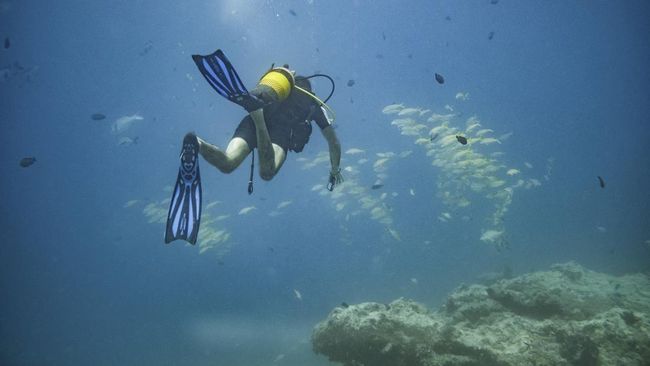Sinkhole or giant holes found on the bottom of the arctic ocean. Experts are still researching the emergence of a giant hole in the Arctic Ocean which is thought to have triggered the movement of the sea floor.
So far, experts claim this hole is thought to have formed from melting underwater ice sheets. Climate change that causes relative Arctic temperatures to rise is one reason the polar ice caps are melting faster, but researchers say this is not the cause of the subsea ice sheet.
The permafrost, or Arctic ice sheet at the bottom of Canada’s Beaufort Sea, has existed for about 12,000 years, since the end of the last ice age.
Until now, the frozen seabed has eluded scientists. This remote part of the Arctic region has only recently been observed by researchers as climate change is shifting sea ice.
“We know major changes are taking place across the Arctic landscape, but this is the first time we’ve been able to apply technology to see changes happening offshore as well,” said Charlie Paull, a geologist at the Monterey Bay Aquarium Research Institute (MBARI). ), as quoted Live Science.
“While the underwater sinkholes we discovered are the result of long-term glacial-interglacial climate cycles, we know the Arctic is warming faster than any other region on Earth,” he added.
The researchers began surveying the Arctic seafloor in 2010. At that time they focused on the edges and slopes of Canada’s Beaufort Sea, but did not specify when the giant hole was discovered. This research has been published in the journal pnas.org.
From these observations, they saw an unusually rough 95 kilometers of land on the seabed. From existing data, this stretch of seafloor is a marker of the edge of Pleistocene permafrost during the last ice age.
Then to find out more about how permafrost could become such a rugged region, the researchers conducted three surveys with underwater autonomous vehicles (AUVs) in 2013 and 2017, then with sonar ships in 2019.
The image captured from the survey shows the emergence of a steep-sided basin with an irregular shape. Researchers say this sinkhole-like crater has a length of 225 meters, a width of 95 meters, and a depth of 28 meters. Its length is wider than Big Ben’s height.
(lom / mik)
–


